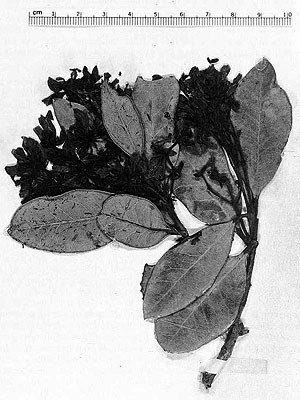Guadalupe Caracara (Caracara lutosa)
The Guadalupe Caracara was described in 1876, it was restricted to the Isla Guadalupe in the Baja California wher it was the top predator.
The species is one of the few who disappeared directly due to hunting by humans; the birds were condemned by farmers to be vicious goat killers, which, of course, was complete nonsense, since the birds almost certainly did not hunt the goats themselves but just fed on deceased animals.
The species was already nearly extinct when on December 1, 1900 the infamous American collector Rollo Beck, in the course of a scientific epedition, encountered what probably were the last eleven existing birds. Not knowing that these might be the last surviving individuals of their species, he shot 9 of them and thereby eradicated the species quite incidentally.
*********************
edited: 21.09.2020
Tag Archives: Isla Guadalupe
Colaptes auratus ssp. rufipileus (Ridgeway)
Guadalupe Flicker (Colaptes auratus ssp. rufipileus)
The Guadalupe Flicker was a subspecies of the Northern Flicker (Colaptes auratus (L.)) that was endemic to the Isla Guadalupe off the west coast of Mexico’s Baja California Peninsula.
The bird reached a size of about 30 cm; it differed from most other subspecies by having a rather brown – instead of greyish crown.
***
The Guadalupe Flicker was last seen in 1906 when also the last 12 specimens were collected; its extinction was mainly caused by the complete destruction of the island’s native vegetation by introduced feral goats.
*********************

(under creative commons license (2.0))
http://creativecommons.org/licenses/by-nc-sa/2.0
*********************
edited: 02.11.2020
Halictus pinguismentus Janjic & Packer
Guadalupe Sweat Bee (Halictus pinguismentus)
The Guadalupe Sweat Bee was described in 2001 based on four specimens that had been collected almost 100 years prior (an exact date was not documented) on the Isla Guadalupe offshore the Mexican Baja California Peninsula.
The original flora of this island is almost completely lost, thus this bee species is thought to be very likely extinct.
*********************
edited: 23.03.2018
Regulus calendula ssp. obscurus Ridgway
Guadalupe Ruby-crowned Kinglet (Regulus calendula ssp. obscurus)
The Ruby-crowned Kinglet is a very small bird found throughout North America, two subspecies are recognized, both of which are migratory birds. The birds that formerly inhabited Isla Guadalupe offshore Baja California / Mexico are still officially regarded as a third subspecies.
***
The Guadalupe Ruby-crowned Kinglet was described in the year 1876, the birds reached sizes of 9 to 11 cm and differed markedly from the two mainland races. The birds from Guadalupe were sedentary, not migratory, they had a dark brownish tinged body plumage and a pink, not red crown patch. The vocalizations were different as well.
In my opinion these differences indicate that the birds from Guadalupe should rather be treated as a distinct species than as a subspecies.
The last Guadalupe Ruby-crowned Kinglets were reported in 1953, all subsequent searches failed to find them and the (sub)species is now considered extinct. [1]
*********************
References:
[1] Lorenzo Quintana-Barrios; Gorgonio Ruiz-Campos; Philip Unitt; Richard A. Erickson: Update on the birds of Isla Guadalupe, Baja California. Western Birds 37: 23-36. 2006
*********************
edited: 17.10.2020
Oceanodroma macrodactyla (W. E. Bryant)
Guadelupe Storm-Petrel (Oceanodroma macrodactyla)
The Guadelupe Storm-Petrel, a 23 cm long sea bird which was locally named as Paino or Petrel de Guadalupe, bred exclusively in the native pine resp. cypress forests of the about 280 km² large island of Guadalupe about 240 km offshore the Baja California peninsula. Almost the entire vegetation of this island was destroyed by feral goats that had been introduced in the 19th century, hence many of the native birds lost their habitat.
Storm-Petrels are very good flyers, which find their food by flying along the surface of the sea, picking up everything edible.
For breeding, however, they need to come to land, where they breed in self-dug burrows. As soon as they land on the forest floor and waddle towards their breeding burrow, they are extremely vulnerable to predation by introduced feral cats – and indeed feral cats are the main reason for the extinction of the Guadelupe Storm-Petrel (and at least four additional endemic bird forms).
The last Guadalupe Storm-Petrel was seen in the year 1912.
*********************
References:
[1] Dieter Luther: Die ausgestorbenen Vögel der Welt. Westarp Wissenschaften 1986
[2] Errol Fuller: Extinct Birds. Penguin Books (England) 1987
*********************

(public domain)
*********************
edited: 17.10.2020
Hesperelaea palmeri A. Gray
Palmer’s Hesperelaea (Hesperelaea palmeri)
This species was described in 1876, it was the sole member of its monotypic genus.
Palmer’s Hesperelaea was a rather compact tree-like shrub, 6 to 7 m tall, the leaves were up to 5 cm long and broadly lanceolate, the flowers were pale yellow.
The species was endemic to the Isla Guadalupe, located 241 km off the west coast of the Baja California Peninsula, Mexico. It was already restricted to a relict population in a single canyon on the east side of the island when it was discovered in 1875.
The island was heavily destroyed by introduced goats, which ate almost the entire vegetation, Palmer’s Hesperelaea was only one of several victims of their unappeasable hunger.
*********************
References:
[1] Reid Moran: The flora of Guadalupe Island, Mexico. Memoirs of the California Academy of Sciences 19: 1-190. 1996
*********************

(under creative commons license (3.0))
http://creativecommons.org/licenses/by-nc-sa/3.0
*********************
edited: 07.11.2017
